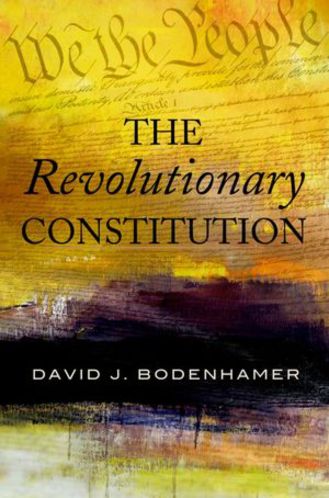Dean Rowan Director, Reference & Research Services
The Revolutionary Constitution by David J. Bodenhamer

Way back in the pre-revolutionary audio days of 1995, the ancient label Archiv Productions released a CD recording of Beethoven’s third and fifth symphonies performed by the Orchestre Revolutionnaire et Romantique, conducted by John Eliot Gardner. Its title was Beethoven: The Revolutionary, and it included liner notes and a timeline situating Beethoven among kindred rebellious spirits: Sid Vicious, Kurt Cobain, and George Lucas, among others, including some talented musicians. To be revolutionary, so the recording’s message seemed to be, has to do not only with effecting extreme and compelling change in the practice of one’s métier, but also with achieving a high degree of celebrity for having done so. In some cases—Vicious, Cobain, Lucas—the celebrity mostly overshadows the artistic achievement, even as their popular cultural impact is commonly viewed as evidence of what is in fact non-existent radical creativity. The packaging of the Gardner CD struck many listeners as unseemly in this respect. If Sid Vicious was revolutionary, then so was Liberace or a Chia Pet, and what does Beethoven have to do with any of that?
Bodenhamer’s view of the Constitution similarly blurs the distinct contexts in which the word “revolutionary” bears meaning. His thesis is that it is revolutionary because it was designed to change the way power and liberty relate, no longer purely in opposition, but in mutual tension and support. But then it’s also because it “is the product of history’s first modern revolution,” which begs the question. The book is aimed at students and general readers. The discussion of how issues central to constitutional debate, such as federalism, balance of powers, equality, voting rights, and security, have evolved in terms of the shifting power-liberty dynamic is a salutary alternative to the usual analysis of the static structure of the document. But Bodenhamer fails to convince even himself that it is revolutionary in any important sense beyond symbolic. He hedges: the Constitution is “a revolutionary framework both for legitimating power and advancing liberty.” It is “both revolutionary and conservative at once.” Now that last account well describes the grand work of Ludwig, too. Sid, Kurt, and George? Not so much.